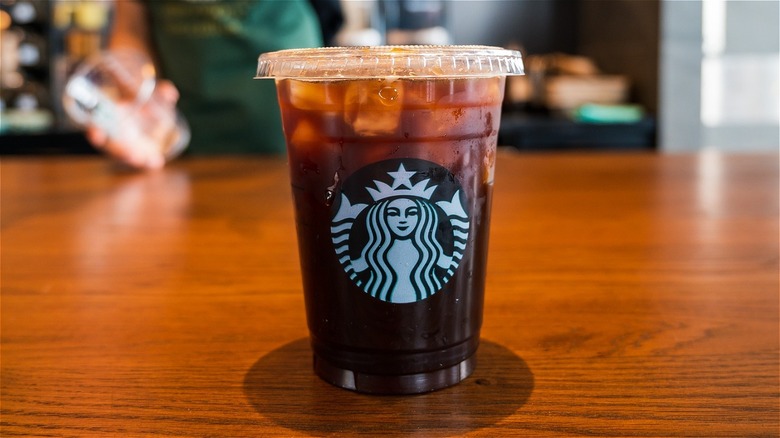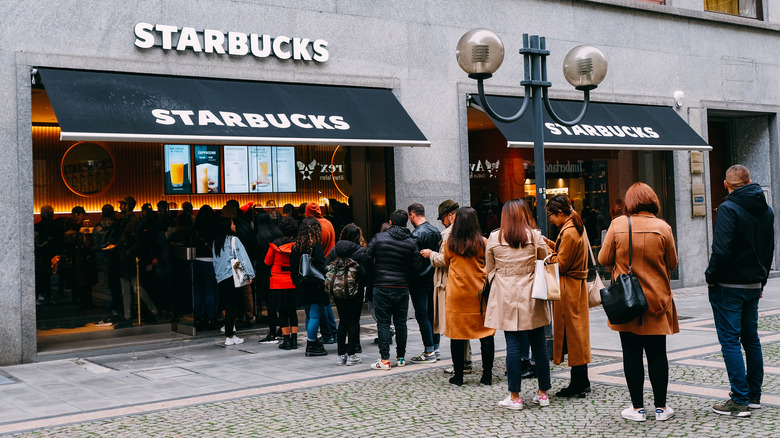How Changing Cold Drink Habits Are Affecting Starbucks' Bottom Line
Starbucks has been under pressure of late. Its high-stakes anti-union campaign diverts company resources and scares off investors. The ongoing pandemic has decimated Starbucks' business in one of its most important markets — China. Ongoing supply chain snafus have increased Starbucks' operating expenses, per CNBC. So, too, has Starbucks' decision to pay higher wages to some baristas — namely those at non-union stores (via CNN). At the same time, most U.S. consumers have not received wage increases enough to offset inflation, leaving many with less disposable income, per Deloitte Insights. While, thus far, this has seemed to affect how much consumers have been saving versus spending, Deloitte observes consumer spending may have finally peaked.
In light of these and other economic realities, Starbucks has been managing investor expectations (via CNBC). Turns out, however, the company's financial results for its third and most recent fiscal quarter were better than expected. Net sales rose 9% and same-store sales increased 3% – despite a 44% decrease in China. Although some portion of these pumped-up revenues may be attributable to inflation (via company press release dated August 2), interim CEO Howard Schultz believes something else is at work. Specifically, Schultz claims "Starbucks' pricing power and customer loyalty" fueled the company's growth over the last quarter. Moreover, he believes Gen Z's obsession with Instagram-able icy cold drinks gives Starbucks a "competitive advantage" (via The New York Times).
Cold drink habits die hard, even as recession looms
According to Starbucks CEO Howard Schultz, the company's positive results during 2022's third quarter was helped by Gen Z's seemingly unquenchable craving for customizable cold drinks, per The New York Times. According to CNBC, three-quarters of Starbucks' sales in its most recent quarter were attributable to the popularity of customizable iced beverages. First, those cold Starbucks drinks cost incrementally more with each add-on, of which there are many (e.g., syrups, milks, toppings). Second, Gen Z seems to love posting photos of their custom masterpieces to social media sites (via The New York Times). All this photo-posting would seem only to increase exposure and demand for more of these drinks – at least among the Gen Z cohort, which, Schultz notes, happens to be Starbucks' key demographic (via CNBC).
Notwithstanding that disposable income appears to be shrinking among consumers, Starbucks customers don't seem willing to sacrifice their iced beverage habit. On the other hand, QSR magazine notes that the cold coffee drink trend is not isolated to Starbucks. Indeed, sales of cold brew coffee drinks at quick-service restaurants were up 27% in April 2022, with iced coffee as the "cold leader."

